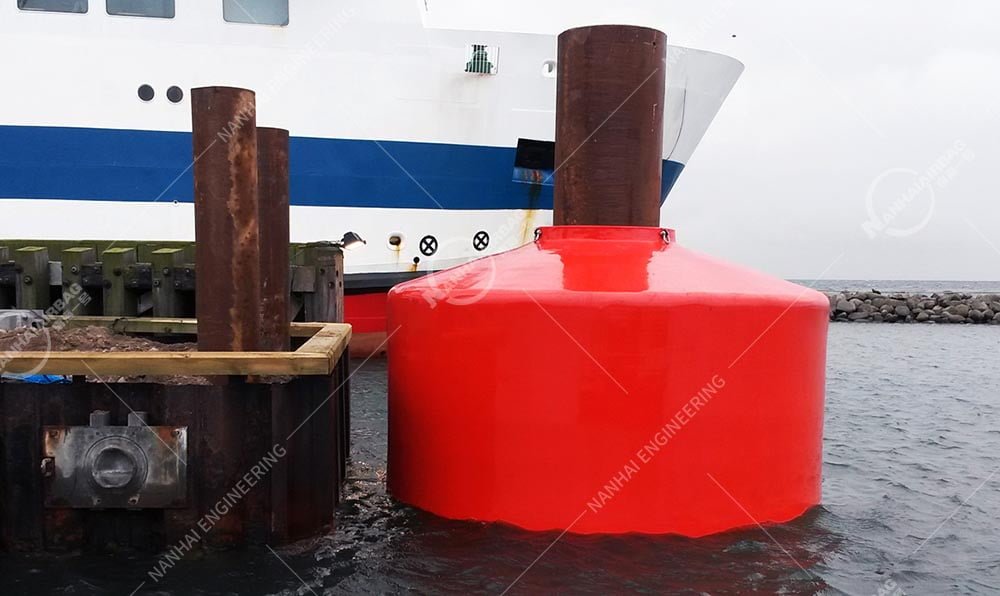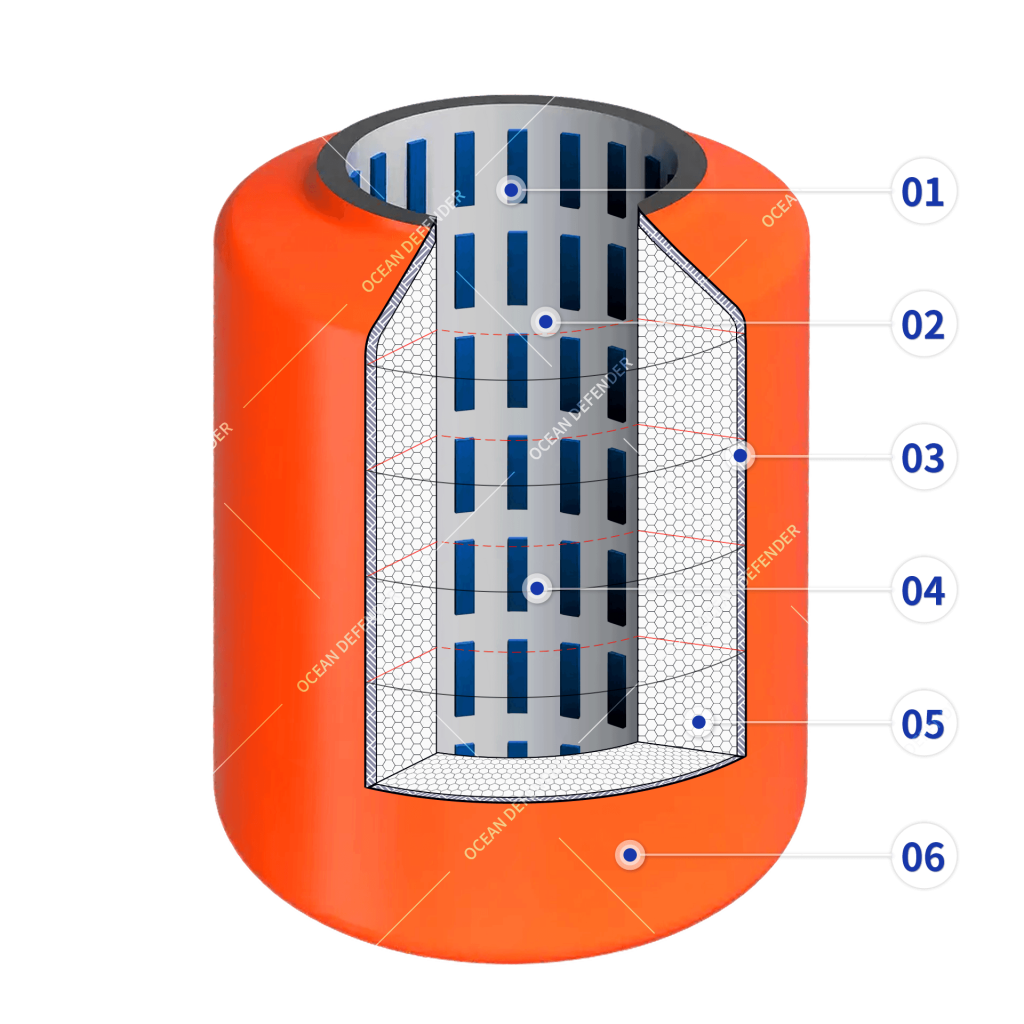Ship Landing Airbags: The Secret Weapon for Safe, Stress-Free Docking
05/08/2025Salvage Airbags: The Underwater Lifesavers Rewriting Maritime Rescue Rules
12/08/2025

Ever watched a sleek sailboat glide into a marina, only to wince as its hull scrapes the dock? Or a fishing trawler’s bow dent a wooden piling during high tide? Those “uh-oh” moments aren’t just annoying—they’re expensive. Enter donut foam fenders: the circular, foam-filled marvels rewriting the rules of waterfront protection. Shaped like a giant donut (but way tougher), these fenders are the unsung heroes keeping boats, docks, and wallets safe. Let’s dive in.
What Are Donut Foam Fenders? (The Quick Answer)
Donut foam fenders are circular marine fenders engineered with a hollow, foam-filled core wrapped in a durable rubber outer layer. Their ring-like design isn’t just for looks—it’s a genius solution to the chaos of docking. Unlike rigid fenders or flat pads, the circular shape distributes impact forces evenly across the entire surface, while the foam core absorbs kinetic energy like a sponge. Think of them as “shock absorbers” for boats—built to turn collisions into gentle taps.
Why This Matters: When a Bad Docking Costs Millions (and Ruins Summers)
Imagine a busy marina in Cape Cod during peak season. A 30-foot powerboat glides in at 4 knots, relying on a rusty metal fender to cushion the blow. The fender buckles under pressure—the boat’s hull scrapes the dock, tearing a 2-foot gash. Repairs? $12k. Downtime? 3 days of lost charters. Angst? Priceless.
This isn’t a worst-case scenario—it’s reality. Ports and marinas using outdated fenders report 30–40% more collision-related incidents than those with donut foam fenders. Why? Because today’s boats are bigger, faster, and made of lighter materials (fiberglass, aluminum) that scratch easily. Traditional fenders (steel, wood, or flat rubber) can’t handle the force—they crack, dent, or shift out of place.
Donut foam fenders solve this by:
- Absorbing 50–70% more energy than flat rubber fenders.
- Reducing hull damage by 90% (no more scraped gelcoat!).
- Lasting 2–3x longer than cheap alternatives, even in saltwater.
How Do Donut Foam Fenders Work? The Science of “Gentle Strength”
These aren’t your average pool floats. Donut foam fenders are engineering marvels built for marine chaos:
1. Circular Design = Even Pressure Distribution
The ring shape is key. When a boat hits the fender, the impact spreads across the entire circumference of the foam core—no single point bears the brunt. This prevents dents, cracks, or tears in both the fender and the boat’s hull.
2. Foam Core = Shock Absorption Superpower
The hollow center is filled with dense, closed-cell foam (like polyethylene or PVC). When compressed, the foam traps air, slowing the impact and converting kinetic energy into heat. This “squishy” action turns a jarring crash into a soft thud.
3. Rubber Outer Layer = Durability Meets Flexibility
The outer layer is made from abrasion-resistant rubber (EPDM or neoprene), which stands up to UV rays, saltwater, and rough docking. Unlike metal fenders that rust or wood that rots, rubber withstands the elements for years.
Why Donut Foam Fenders Beat the Competition
Traditional fenders (steel, wood, flat rubber) have their uses, but donut foam fenders are in a league of their own:
1. vs. Flat Rubber Fenders
Flat fenders concentrate impact on a small area, leading to dents or tears. Donut fenders spread force across a larger surface, so even heavy boats glide smoothly without damage.
2. vs. Steel Fenders
Steel is durable but rigid—it transfers impact back to the boat, causing hull stress. Donut fenders absorb and redirect energy, reducing strain on both the vessel and the dock.
3. vs. Wooden Fenders
Wood rots, splinters, and floats away. Donut fenders are waterproof, non-rotting, and anchored securely—no more replacing waterlogged logs every season.
People Also Ask: Your Top Questions About Donut Foam Fenders
Q: How big are donut foam fenders?
A: They range from small (12–18 inches diameter) for kayaks or small boats to large (3–4 feet) for yachts or fishing trawlers. Custom sizes are available for unique dock layouts or vessel shapes.
Q: Are they easy to install?
A: Absolutely. Most come with built-in straps or anchor points to secure them to docks, pilings, or mooring posts. A team of 1–2 people can set up a full marina’s worth in a few hours.
Q: Do they need maintenance?
A: Minimal. Rinse them with fresh water monthly to remove salt or algae, and inspect for cracks once a year. The foam core rarely needs replacement—even after years of use.
Q: Are they eco-friendly?
A: Yes. Foam is recyclable, and rubber is long-lasting, reducing waste. Many brands even use recycled materials in their production.
Q: Can they handle rough weather?
A: Definitely. Their waterproof design and UV-resistant rubber stand up to rain, wind, and even hurricanes. They’re a favorite in coastal marinas prone to storms.
Final Thoughts: Don’t Let Docking Disasters Sink Your Summer
In a world where every scratch costs money and every delay ruins plans, donut foam fenders aren’t just an upgrade—they’re a necessity. They protect your boat, your dock, and your peace of mind, turning chaotic docking into a breeze.
Ready to upgrade? Start by measuring your dock space and boat size, then reach out to trusted marine suppliers (look for those specializing in marine fenders). Your hull, your wallet, and your summer fun will thank you.
